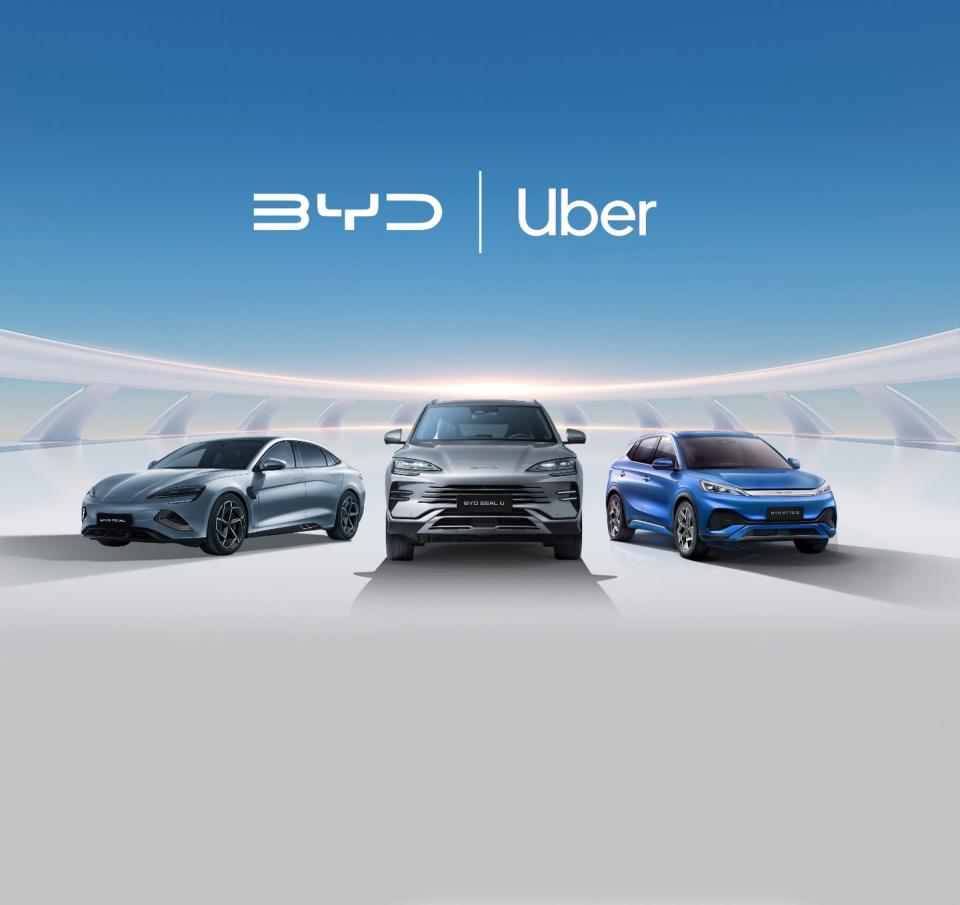
-
Uber and BYD reveal plans for the ride-hailing company to offer some 100,000 EVs produced by the Chinese automaker to its drivers in a number of regions.
-
The ride-hailing company says it wants to offer “best-in-class pricing and financing” to Uber drivers, starting in Europe and Latin America.
-
BYD has been on an expansion roll over the past few years with its lineup of affordable EVs, including in Europe, with the companies hinting that Canada could be part of their longer-term plans.
BYD is no longer completely unknown in North America, with its electric offerings now having made their way to Mexico and South America amid the company’s global push.
And now BYD has teamed up with Uber to bring some 100,000 EVs to a number of regions where Uber operates, starting with Europe and Latin America, and later on perhaps even Canada.
The stated aim, according to the automaker, is to bring down the cost of EV ownership for Uber drivers with what it calls “best-in-class pricing and financing,” which may include discounts on insurance, vehicle maintenance, and charging.
It also complements Uber’s stated EV transition strategy.
“When an Uber driver makes the switch to an EV, they can deliver up to four times the emissions benefits compared to a regular motorist, simply because they are on the road more,” said Dara Khosrowshahi, CEO of Uber. “Many riders also tell us their first experience with an EV is on an Uber trip, and we’re excited to help demonstrate the benefits of EVs to more people around the world.”
BYD, for its part, notes that Uber drivers are switching to EVs five times faster than owners of private cars. Despite this, “driver surveys show the price of EVs and availability of financing remain the key barriers to switching,” BYD notes.
But this deal will pass America by, as BYD models aren’t sold or leased in the US, at least for the moment, even though the automaker already has an office stateside. And BYD has yet to formally launch sales in Canada, which could yet be scuttled by threats of tariffs.
What’s more, the two companies also plan to cooperate on future BYD vehicles with autonomous capabilities. So human drivers aren’t necessarily part of the longer-term picture, even though Uber might not want to incur the costs (and full-time personnel) of operating a large robotaxi network just yet.
But SAE Level 4 robotaxis are certainly part of the company’s future strategy.
BYD itself has enjoyed several years of rapid expansion into new markets, becoming one of the most common Chinese brands available outside the Middle Kingdom, while beginning to challenge other longtime regional players in their own respective markets.
Recent electric models like the Seagull and Dolphin have received industry praise while offering very low costs of entry to EV-minded shoppers in several key EV markets.
But one aspect of this deal that has received relatively little attention is the fact that Uber is now increasingly in the business of leasing and also renting cars to its independent contractor drivers, and thus wants to make money off this arrangement.
We are old enough to remember when Uber was content to derive revenue mostly from drivers giving rides to passengers, rather than from leasing cars to drivers. Now, after a number of unprofitable years—a trend reversed in 2023—Uber is continuing to morph into a leasing company by offering cars via “the Uber platform.”
Should BYD be able to sell its cars in Canada and the US without tariffs, or is a different approach warranted? Let us know what you think in the comments below.







